Contents
- Traditional and Modern Eating Practices
- Vegetarianism and Dietary Restrictions Across Communities
- Disciples of Nanasaheb Dharmadhikari
- Meals of the Day
- Local Produce
- Baby Food and Tiffin Boxes
- Festival and Seasonal Delicacies
- Rushichi Bhaaji
- Janmashtamicha Naivedya
- Wedding Food
- Prasad and Bhandara
- Smoking, Drinking and Substance Use
- Local Culinary Traditions
- Pakatle Kaju (Sugar Coated Cashews)
- Pohe
- Pote Masale
- Eating Out
- Patil Khanaval
- Sanman Restaurant
- Trimurti
- Appa Tandel Misal
- Nene Wadevale
- Londhe Khanaval
- Shashi Wadewale
- Jhinje Sweet Mart
- Anand Bhuvan
- D Samson’s Cold Drinks
RAIGAD
Food
Last updated on 22 July 2025. Help us improve the information on this page by clicking on suggest edits or writing to us.
Traditional and Modern Eating Practices
With the changing times, food habits among locals have also changed. People used to eat Metkut Bhaat for breakfast, and traditional dishes such as Patoli and Ghavan were commonly made in every vegetarian household. However, nowadays, Pohe, Sheera, bread butter, and cornflakes have become the most frequently prepared breakfast items for everyone.

People visit Raigad primarily to taste the seafood that is prepared here. Most of the residents in Raigad belong to communities such as Koli, Aagari, Chaukalshi, and Pachkalshi. The preparation of seafood in Raigad is quite different from how it is made in South Konkan or other districts. For most seafood dishes, tamarind and dry coconut are commonly used in the preparations, with the "watan" playing an important role.
Some of the most beloved dishes in the Raigad District include Jitada Fry, Ravas Fry, Surmai Fry, and Sukaticha Rassa (dried prawn curry). Murya and chivani are types of fish found in the freshwater streams of Alibag during the monsoon season and are favorites among locals. Dried fish is also very popular; Sukat Bhakari is a common breakfast for non-vegetarians in Alibag.
As per locals, due to the increase in tourism, local food is either becoming generalized or the food served in hotels is being adapted to suit tourist preferences.
Vegetarianism and Dietary Restrictions Across Communities
Disciples of Nanasaheb Dharmadhikari
The Dharmadhikari family is originally from the Raigad district. Based on their teaching, the followers of the Dharmadhikari family tend to follow a lifestyle where they consume only vegetarian food. Non-veg food and alcohol are generally not consumed in these families.
Meals of the Day
The staple food across all communities in Raigad is rice bhakri, rice, and preparations of pulses and vegetables. Fish and meat are also commonly consumed in daily meals. Speaking of fish, while plenty of saltwater fish are easily available throughout the district, the freshwater fish here are very popular. Jitada (Asian Seabass) is a well-known variety of fish largely found in Pen taluka and is often referred to as the King Fish of Raigad (Raigad cha Raja Masa). Dry fish is equally loved by the locals in Raigad. Families that eat dry fish typically purchase large quantities between January and May and store them for the rest of the year. Mhasala taluka is particularly famous for its dry fish market. Additionally, people also buy dry fish from the Bomblya Vithoba Jatra in Khopoli.
Since rice is the major crop in the district, there are many mills in Pen and Roha where it is further processed into pohe (beaten rice). The roasted poha from Pen is very famous and is used to make chivda, a popular snack. Pohe is a common breakfast item and is often prepared for guests. In villages and small towns in the district, women still make rice and poha papad, which are consumed at home and sold through retailers in nearby cities. The locals mostly prefer these papads over any other branded ones available in the market.
One of the favorite snacks for older and middle-aged people in the district is shev and pohe. The regular Bhavnagri Shev that is easily available in local sweet marts is mixed with uncooked pohe and eaten during chai time or even for breakfast.
Many farmers in the district grow vegetables alongside their main crops. They generally bring these vegetables to nearby markets for sale. White onions and cucumbers from Pen are particularly famous and are commonly eaten with meals. Many other root vegetables (kand-mula) can be found in local markets, either grown by farmers or gathered by adivasi tribes that depend on the jungles for their livelihood.
One of the most important ingredients in everyday meals is shredded coconut, which is readily available in abundance in the district. It is used as a topping on various vegetable preparations and sometimes even on rice. Among fruits, some widely grown varieties include mangoes, jackfruits, watermelons, and jibud (a type of melon). While all of these fruits are eaten raw, locals also use mangoes, jackfruits, and jackfruit seeds in cooked vegetables and curries, which are loved by people across different age groups.
Solkadhi is a popular appetizer drink consumed after meals, especially during the summer. It is a combination of buttermilk, kokum, ginger-garlic paste, chili paste, and salt to taste. Another preferred drink is Tadi.
Popular rice rotis in the district:
- Bhakri: Rice flour boiled with water and then made by hand.
- Dashmi: Similar to bhakris but prepared without water; milk is used to knead the dough. These are typically made during religious functions.
- Amboli and Ghavne: Rice flour mixed with water to form a watery batter. This batter is poured onto a pan with a little oil or ghee spread on it at the beginning. These are served with chutney or eaten with chicken or mutton.
- Sandan: Largely prepared by Konkani Muslims in the district; these have a slightly sweet taste.
If you travel across the district, some popular items you will find at all times include Vada Pav, Misal Pav, and Vada Usal. Misal and Usal are common since pulses are widely grown in the region.
Local Produce
Raigad is known for its white onions, which are specifically grown in the Alibag and Pen taluka of the district. These onions are considered medically beneficial and are sold from mid-March until the end of May in various shops. Many locals can be seen selling these onions on the roadside, with sales primarily measured using the मण parameter. The poha papad and many other types of papad have been made and traded for decades in Pen taluka. Sane and Shaha are some of the famous brands known for their poha papad and Mirgunda, a type of papad that is slightly spicy and comes in a rectangular shape.
Another special brand from Pen is Lokmanya, which was started by the Tilak family living here. They produce and sell items such as Shrikhanda, Aamrakhanda, Pineapple Shrikhanda, buttermilk, and Sitaphal Rabadi across Pen and Alibag talukas. Additionally, supari, watermelon, jaam, and bhokar are other fruits grown and traded from Raigad to other districts. Various kinds of dry fish are also traded from Raigad.
Baby Food and Tiffin Boxes
Since rice is the staple food in the district, a baby's first food is also a preparation made from rice. Some families mix rice with moong dal, wash it thoroughly, dry it, and then grind it into a powder. This powder is then cooked in boiling water to form a paste. Either turmeric powder along with salt is added, or some families add sugar to make it a little sweet, marking the baby’s major developmental milestone. This preparation is called ‘Khimti’ in the local language.
Festival and Seasonal Delicacies
In Raigad, special occasions are marked by elaborate, home-cooked meals that follow traditional norms. These meals vary by festival but often include seasonal items, sweets, and regional staples that reflect both cultural values and culinary heritage. Families prepare these spreads with care, offering a glimpse into the community’s festive food traditions. The Vani community, particularly, often prepares food for traditional festivals without onion and garlic.

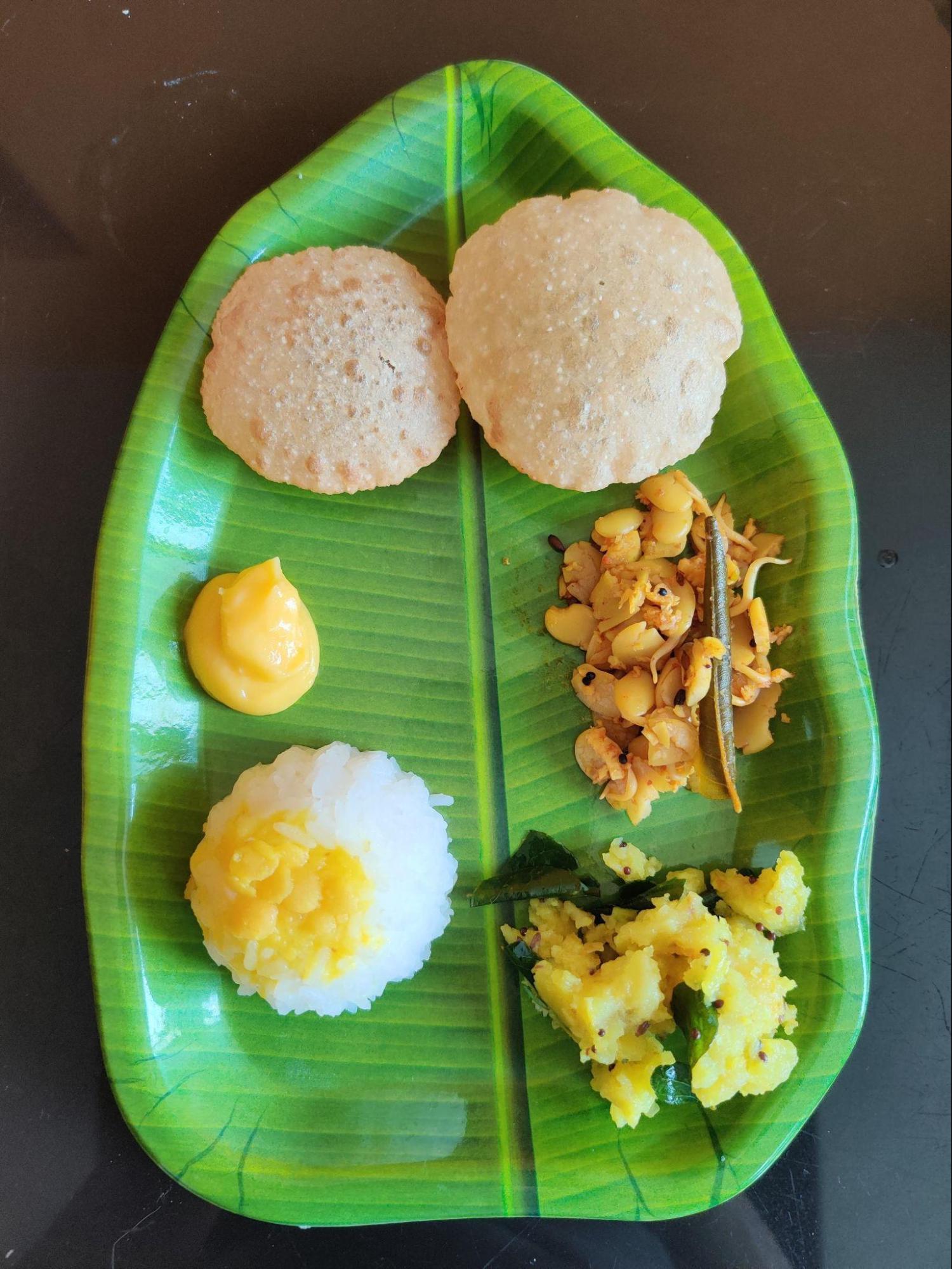
Rushichi Bhaaji
Rushichi Bhaaji, also called Rushinchi Bhaaji, Badam, or Hermit’s Stew, is a bhaaji made on the day of Rushi Panchami after the Ganesh Festival in Raigad district. It is said that in earlier times, our rishis used to eat this kind of bhaaji to survive. It is a dish made with a mix of uncultivated vegetables, kinds of gourd, and local leafy vegetables such as takal (cassia tora), math (amaranth), kaval (spiny gourd), and bhopla (pumpkin). Aalu (Colocasia) is considered the main ingredient in the bhaaji by many. In villages, the stems of math, called bhaje, are loved by many. All the vegetables are finely chopped and cleaned first. After preparing the tadka, all the vegetables are put into the pot and cooked for at least 15 minutes. Different flavors like ginger and cumin seeds are used across the district. One doesn't need to add extra water, as all the vegetables already have enough moisture for cooking.
This dish is considered Sattvik Aaahar: a category of food recognized by Ayurveda. It is said that all the vegetables used in the preparation should be produced without any ox. Traditionally, around 18-21 different vegetables are used for this dish, and it is made without any usual masalas. The sabji is served with rice roti, puri, or chapati as well.
Janmashtamicha Naivedya
The Vani community in Raigad prepares a special meal as naivedya on the night of Janmashtami. This meal consists of Kakdhiche Vade (cucumber vade), Panch Bhel Usal (a mix of five types of boiled pulses), Dashmi (a type of rice roti), and Dahi Pohe (a mixture of pohe, dahi, and sugar).
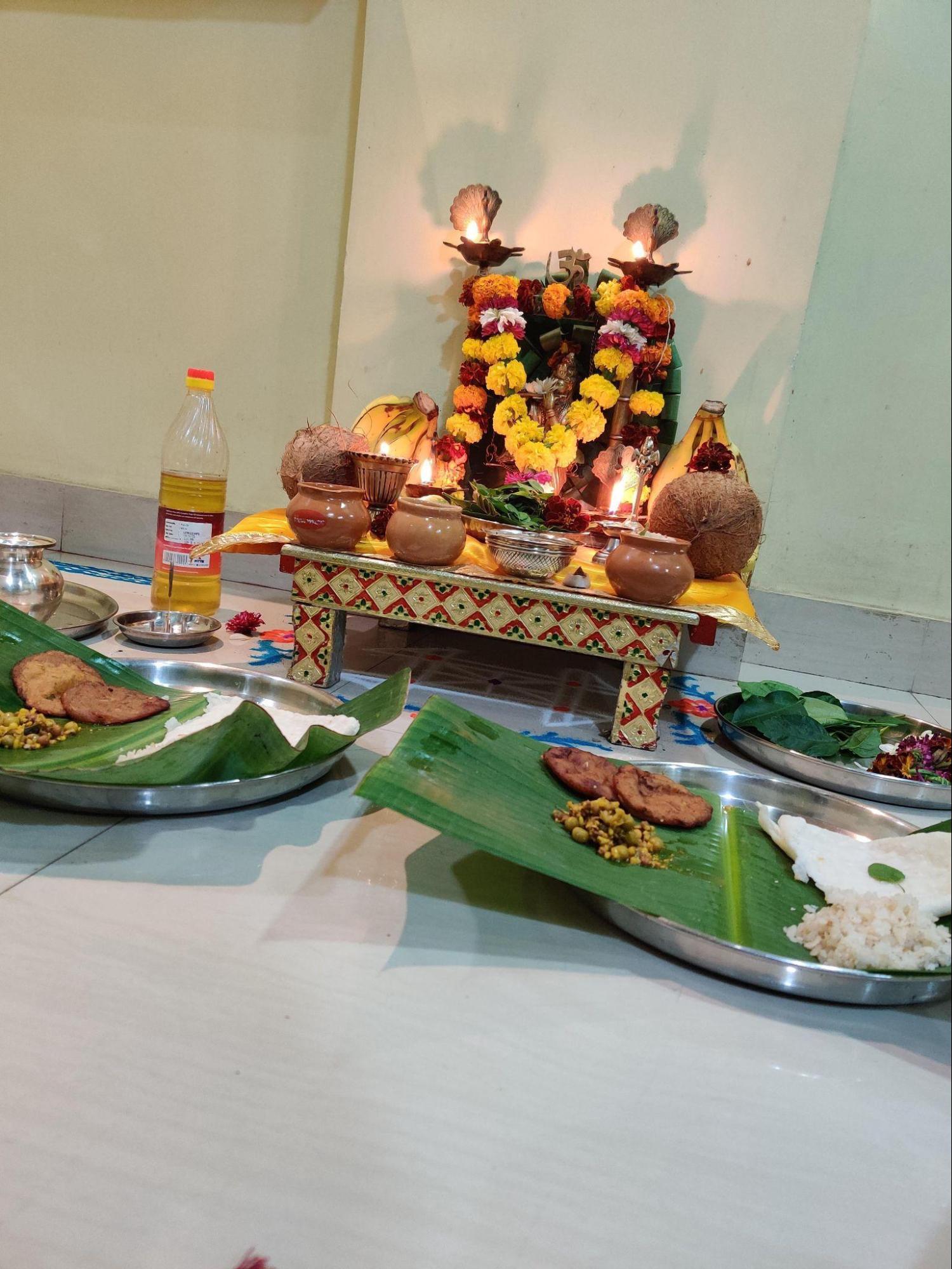
On this day, people typically eat after 12 am, as it is believed that Krishna's birth takes place at midnight. Families perform puja and prayers at this time, after which dinner is served.
Wedding Food
In almost all Maharashtrian weddings in the district, only vegetarian meals are served to guests and family. Non-vegetarian options are often offered to guests only on the Haldi evening. In the Koli community, fish is served on this day, while in most other communities, either chicken or mutton is provided. A basic vegetarian meal is always available on Haldi day for those who prefer not to eat non-vegetarian food. While a wide variety of cuisines, including traditional Maharashtrian, North Indian, and Chinese delicacies, are offered on the wedding day, a common meal option for a low-budget event is rice bhakri and Chavli-Batatchyachi Bhaaji, along with Dal-Rice.
Prasad and Bhandara
Across major communities such as the Kulmbi, Vani, Agri, and Mali, a common meal offered as naivedya (prasad) includes Math-Bhendi chi Bhaaji, Valache Birde, Koshimbir, Varan-Bhaat, and Shira.
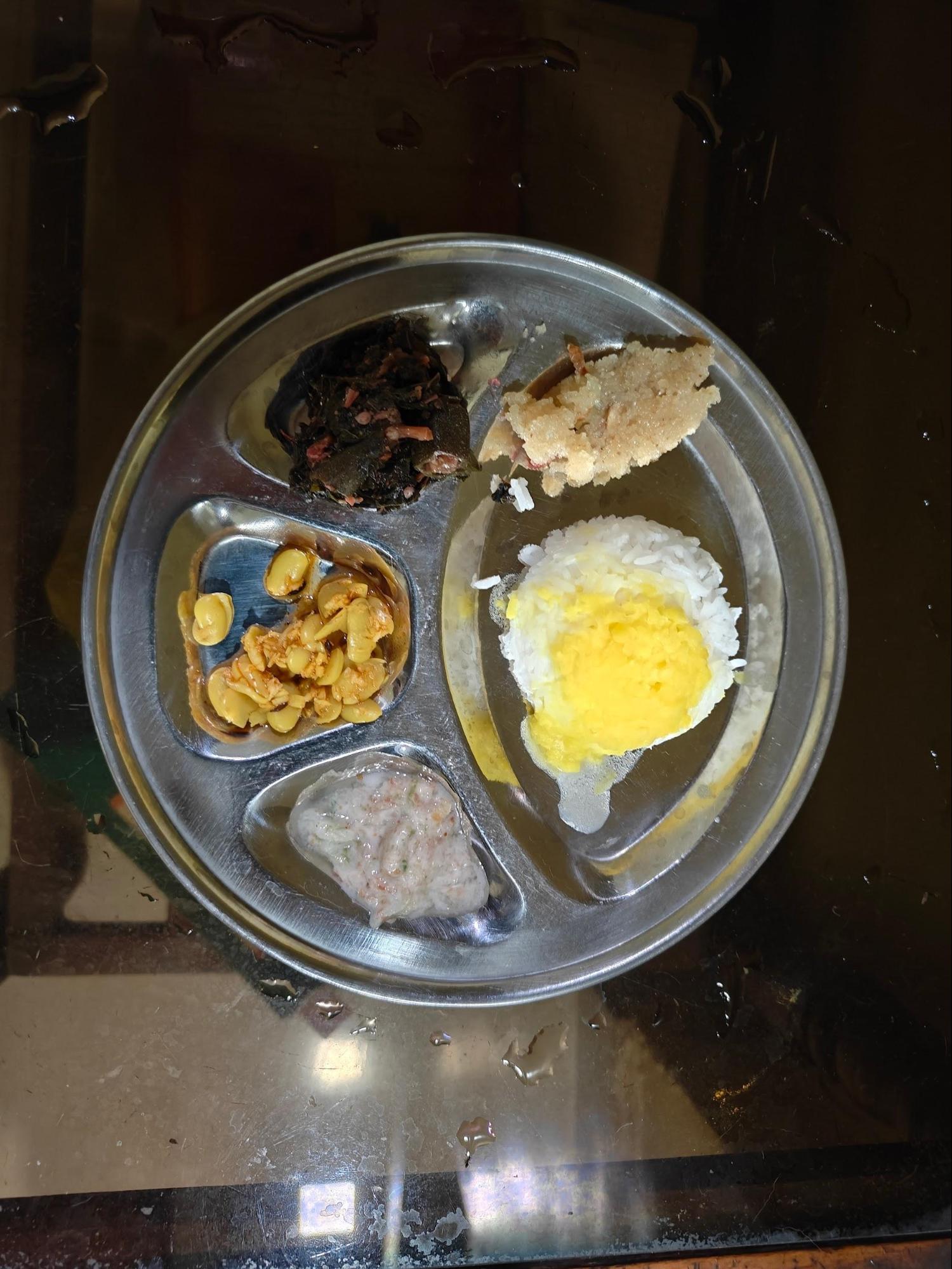
During village fairs, palkhis, and religious celebrations, people generally come together in mandirs to cook food and share meals. Many years ago, there was a tradition of slaughtering a male buffalo during the Gram Dev yatra in Chandore. Currently, this ritual is no longer practiced. Instead, goat meat or chicken is first offered to the Devta and then cooked and consumed by all. The Agri and Vani communities offer goat or chicken during certain events, such as on the fifth day after a baby is born (pachvi) and the day when the baby's hair is cut for the first time. Some families also provide a non-vegetarian meal during the annual Kul Devta pooja.
Smoking, Drinking and Substance Use
Historically, Raigad was known for the production of ganja in Panvel and tambakhu (tobacco) in Pen. A variety of paans (betel leaf preparations) is also popular among the residents of Panvel. One of the most renowned paans in the city from earlier times is the Kalkatta Masala Paan. This particular paan gained popularity because the Kalkatta variety of betel leaves grows abundantly in Panvel. There is a panpatti (paan shop) at Musalman Naka in Panvel, where one Muslim family has been running a small paan tapri for over 70 years, serving locals and visitors alike.

During engagements and weddings, however, the scene is quite different. Nowadays, both in cities and villages, alcohol is organized, especially on Haldi day (the day before the wedding).
Local Culinary Traditions
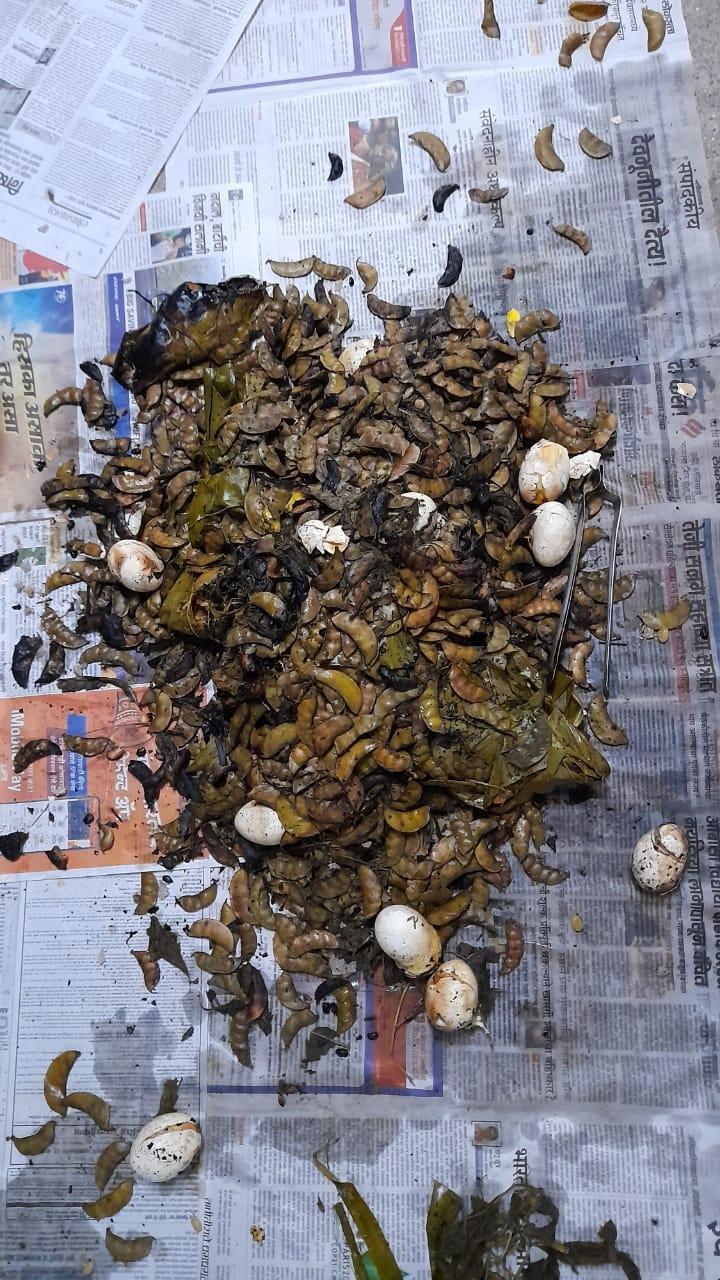
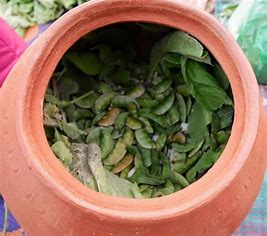
Popati is a seasonal dish made during winter in the Raigad district of Maharashtra. It is known for its distinct flavor and is considered a local specialty. Popati can be made in both vegetarian and non-vegetarian versions. The key ingredient is bhamburdi leaves, which grow on farms in winter and give the dish its strong and unique aroma.
The dish is prepared by layering vegetables and other ingredients in a mud pot. Common additions include pavta (lima beans), ghevda (dolichos beans), matar (green peas), and especially vaal (local green beans), which are preferred for their flavor. Vegetarians also add corn, potatoes, sweet potatoes, onions, and eggplants, along with rock salt. Potatoes are often sliced partially and stuffed with masala. In non-vegetarian versions, eggs and marinated chicken are wrapped in banana leaves.
The pot is first lined with bhamburdi leaves, then filled with the ingredients, and covered again with more leaves. The opening is tied tightly, so nothing spills out. The pot is placed in a pit, surrounded with gonpat, and cooked in a campfire. Some people use dried coconut husk, leaves, and sticks to control the fire’s heat. After about 30 to 45 minutes, the pot is removed and emptied quickly onto paper or banana leaves to prevent overcooking from the heat.
Popati is a community dish, often made in groups during the winter season. Its earthy flavors and traditional cooking method make it a cherished part of Raigad’s food culture.
Pakatle Kaju (Sugar Coated Cashews)
Pakatle Kaju were once a popular sweet sold in local shops during melas and festivals in the region. Made through a time-consuming process, this sweet resembled Sakhhar Futane (sugary gram) but used cashews instead of puffed gram. Elderly locals especially remember the version created by the Sunkale family, known for their sweet shop.
The preparation involved melting sugar in separate pots over a special fireplace called a bhatti. The melted sugar was poured in layers over cashews placed in a large iron kadhai, with constant stirring to achieve a crisp, even coating. The process required skill and patience.
Today, sugar-coated cashews are rarely seen, as many traditional sweet shops have closed over the years. With urbanization and changing food habits, this sweet has faded from everyday life, though it still lives on in the memories of older generations.
Pohe
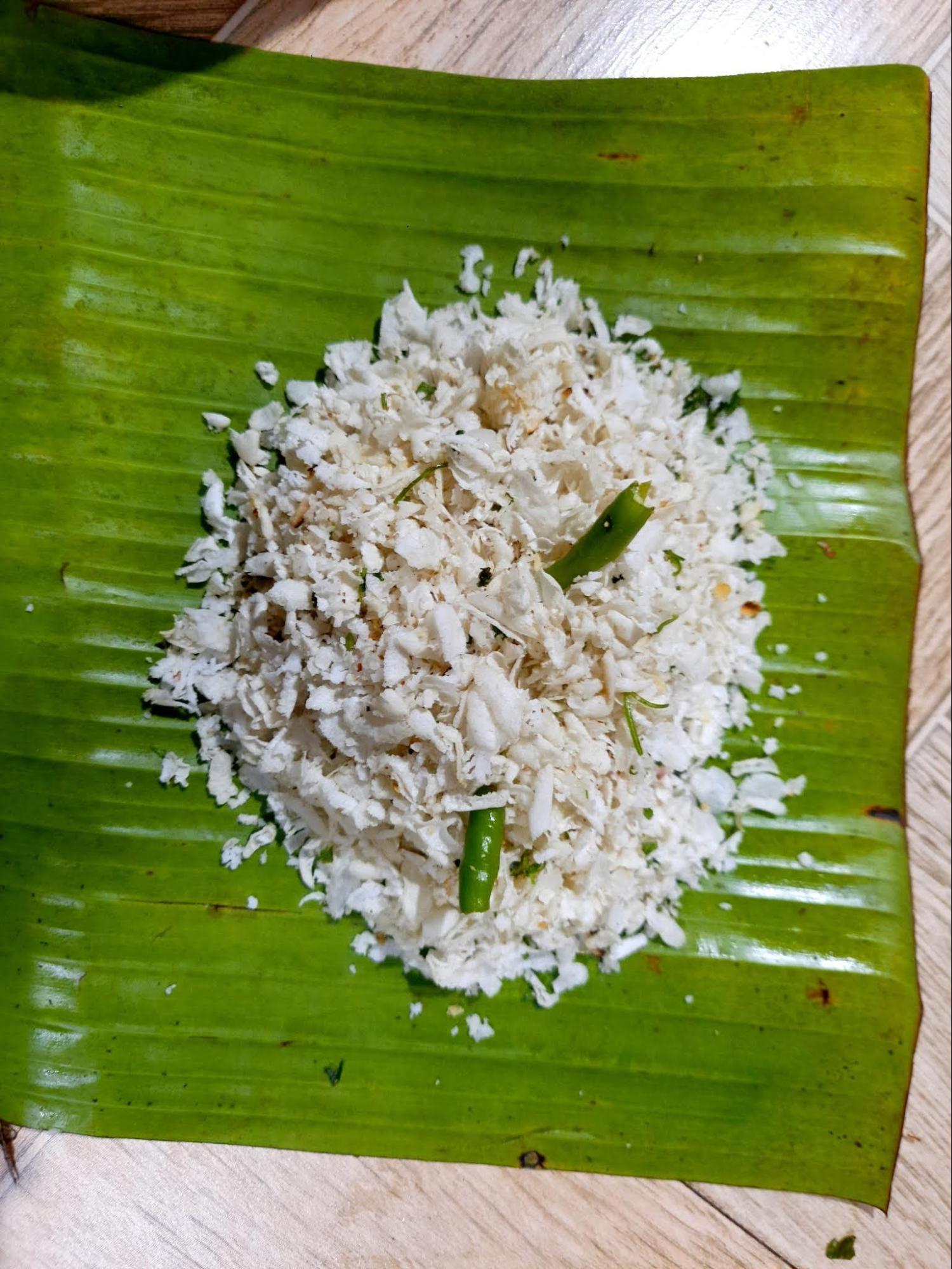
Pohe is one of the well-known foods in Maharashtra and can be found across the state; however, some different kinds of pohe are also made in Raigad.
- Kol Pohe: The water extract of tamarind and jaggery is used to make kol, and normal pohe are eaten with this kol.
- Well-Mixed Pohe: Finely chopped onion, tomato, and coconut are well mixed with pohe along with some sugar and salt. People add chili powder according to their preference. Any kind of papad goes well with this type of pohe.
- Waal Pohe: Pohe are also eaten along with any kind of bean sabji like matki or vatana, but mainly paired with waal sabji called usal.
Pote Masale
Pote Masale is known for its rich and flavorful spice blends, with its Garam Masala and Sunday Special Masala being local favorites. The story of these iconic masalas began in 1942, when Bhalchandra Narayan Pote, a clerk at the Bombay High Court, came across an old chilli grinding machine outside a flour mill in Girgaon. Curious about it, he learned that the machine was once used to grind chillies and was being sold off due to age.
Inspired by the idea of starting something of his own, Mr. Pote discussed it with his family. They pooled resources, borrowing money from a local lender and from home, and bought the machine. Their first product was a simple yet flavorful red chilly powder: a mix of dry red chilli powder and other spices. Over time, they experimented and developed a variety of spice blends.
In 1954, the family opened their first shop at Tapal Naka in Panvel. By 1962, they had set up a full manufacturing unit in the local market yard. Today, around 20 people work at the unit, with many others handling sales and distribution. They also operate a large showroom that showcases their growing range of masalas.
Pote Masale products are now easily available in local shops, large stores like D-Mart, and on various online platforms. Despite growth and modernization, the brand continues to be rooted in the traditional flavors and effort that began with a single chilli grinding machine.
Eating Out
In some of the major cities, youngsters are seen eating outside more often. Elderly people often prefer eating at home. People across different age groups from the district travel to the tourist places such as Shrivardhan, Alibaug, and Mahad, and enjoy the local food in homestays, hotels, and street-side stalls.
Patil Khanaval
Patil Khanaval, located in Murud, is widely known for its Chicken Thali, Prawn Thali, and other seafood dishes. This Khanaval has been in operation for over 25 years and is nestled among beautiful coconut trees, attracting tourists from all over India.
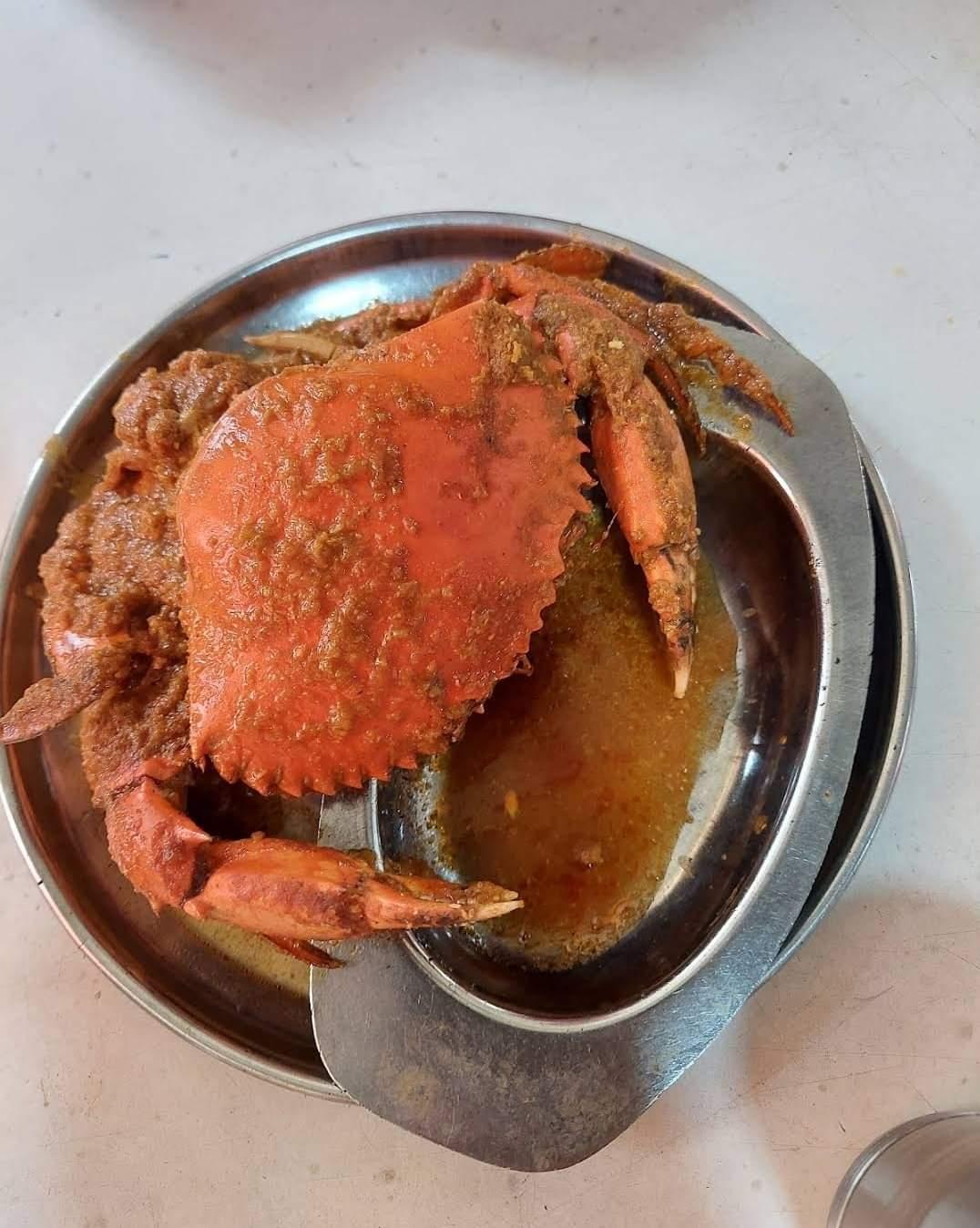
Sanman Restaurant
Sanman Restaurant, located in Alibag city, is well-known for its authentic Gomantak-style seafood thali.
Trimurti
A pure vegetarian snacks center located between Panvel and Pen, Trimurti offers a variety of authentic snacks such as Pohe, Thalipith, Kharvas, and Kothimbir Vadi.
Appa Tandel Misal
Appa Tandel Misal, a small snacks center located in Pen taluka near Chawadi Naka, is renowned for its Misal and has been serving customers for the past 100 years.
Nene Wadevale
Nene Wadevale, located in the center of Alibag city, is a well-known food stall that offers a variety of authentic vegetarian dishes for breakfast and lunch. A popular story about this stall involves a poster of the owner directing visitors with the caption "te paha, tya tithe, Nene Wadewale" (look, there it is), which was displayed at various locations in the city, providing entertainment for locals.
Londhe Khanaval
Londhe Khanaval, located in Panvel, has been in operation for over 60 years. This small establishment adjoining the owner’s home is known for its traditional thalis. The food here tastes as good as a homemade meal.
Shashi Wadewale
Shashi Wadewale, also in Panvel and operating since 1961, is one of the best vada pav shops in the area. They are known for their unique green chutney.
Jhinje Sweet Mart
Jhinje Sweet Mart, situated in Pen, is famous for the excellent sakhar pedha (sugar-coated kandi pedha) made by the Jhinje family.
Anand Bhuvan
Anand Bhuvan, located en route to Panvel, is very popular for its non-vegetarian menu. It typically gets crowded during lunch and dinner hours, so patrons may need to wait 20 minutes to half an hour depending on seat availability.

D Samson’s Cold Drinks
Daniel Samson Digodkar was very fond of aerated beverages and established this iconic soda joint in the year 1938 after his mill shut down. The founder’s family, as the name suggests, is of Jewish origin and has been living in the region since the British times. Some of the most loved drinks here are: ice cream soda, kala khatta, ginger lemon, and more. One can enjoy a drink in the outlet, or they also have bottled soda that can be taken away. The family says that the soda-making machines were imported from Europe back in the day.
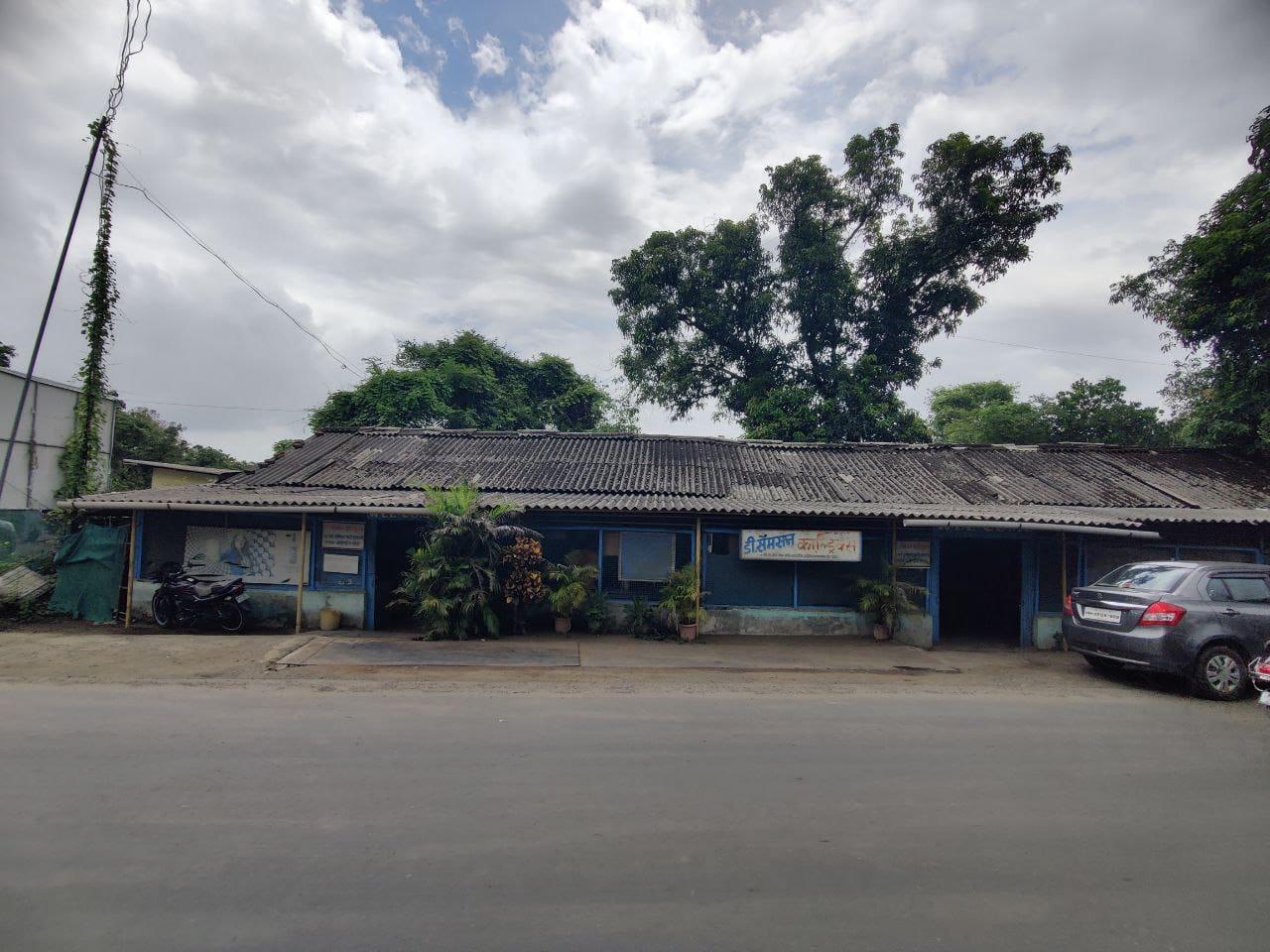

Last updated on 22 July 2025. Help us improve the information on this page by clicking on suggest edits or writing to us.